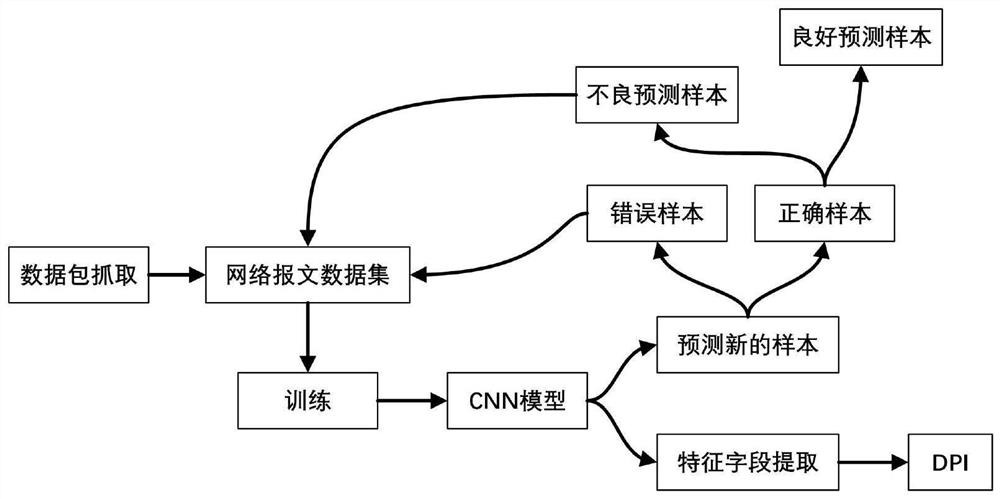Traffic identification and feature extraction method based on deep learning
A feature extraction and traffic recognition technology, applied in neural learning methods, character and pattern recognition, special data processing applications, etc., can solve problems such as waste of model information, poor interpretability, and difficult data packets
- Summary
- Abstract
- Description
- Claims
- Application Information
AI Technical Summary
Problems solved by technology
Method used
Image
Examples
Embodiment
[0033] Step 1: Capture of data packets:
[0034] Use the process packet capture tool openQPA to capture packets. The data packets generated by each process are stored in a separate pcap file. According to the characteristics of some applications, the data packets of a single application are further separated. For example, the WeChat data packets are divided into WeChat chat data packets, WeChat picture data packets, WeChat video call data packets, etc., to provide finer granularity classification.
[0035] Step 2: The establishment of the data set
[0036] The Scapy library is an open source network traffic packet parsing library. The Scapy library is used to process pcap files and remove information such as the MAC address and IP address in the header. This information has nothing to do with the application type of the data packet and belongs to interference information, so it should generally be removed. However, if there is a need to filter data packets based on IP addres...
PUM
 Login to View More
Login to View More Abstract
Description
Claims
Application Information
 Login to View More
Login to View More - R&D
- Intellectual Property
- Life Sciences
- Materials
- Tech Scout
- Unparalleled Data Quality
- Higher Quality Content
- 60% Fewer Hallucinations
Browse by: Latest US Patents, China's latest patents, Technical Efficacy Thesaurus, Application Domain, Technology Topic, Popular Technical Reports.
© 2025 PatSnap. All rights reserved.Legal|Privacy policy|Modern Slavery Act Transparency Statement|Sitemap|About US| Contact US: help@patsnap.com



